Seconded By: Riccardo Magherini,
They [the ranchers] think the solution is to bury us, but they didn’t realize that we are seeds.”
Think about the Amazon rainforest. Now, what’s the first thing that came to mind?
The Amazon rainforest is often idealized and romanticized by the Western world, yet the people who call this forest their home are often forgotten. The Indigenous communities that have lived in the Amazon for generations face threats from a deep, ongoing colonization process which is usually left behind when we address topics like climate change.
Seeds of Resistance captures the bond between Indigenous peoples and their sacred lands through drone imagery. Each photograph is a diptych—two perfectly square images, carefully composed to work as one unified piece. One square portrays a land defender; the other, an aerial image of the land they fiercely protect. This juxtaposition highlights the inseparable connection between people and land, emphasizing that there is no forest without the people and no people without the forest.
For Indigenous communities, the land is sacred; their mother and a life support system that has sustained them for generations. Even when the forest is destroyed for profit-driven projects, the land remains sacred because thousands of ancestors still rest beneath their feet.
Seeds of Resistance hopes to inspire us to question how we look at the rainforest and to care for the cultural heritage and people who live on it. The Amazon is much more than just a green wall of trees producing oxygen for us to breathe; it is a place of incredible diversity and home to millions of people who deserve respect and recognition.
In a world that often prioritizes profit over people, standing in solidarity with these communities and recognizing the relevance of their struggle is more important than ever. Seeds of Resistance is not just a photography project—it is a statement reminding us of our role in respecting the planet and, especially, the people who call it home.
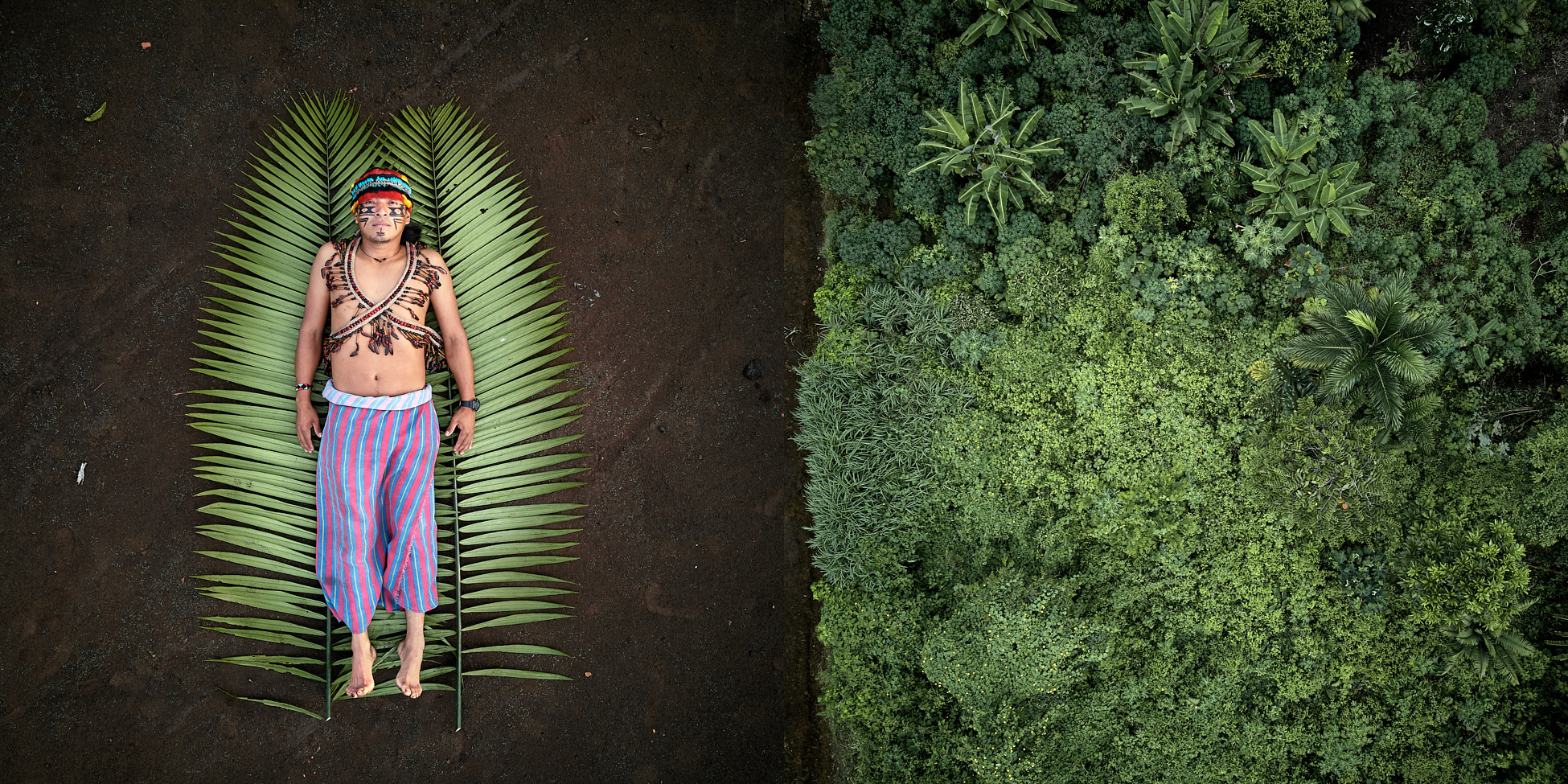
SOR 01
Nantu, an Indigenous man from the Achuar Nation in Ecuador, leads a project focused on solar-powered boats for communal transportation. With the support of Kara Solar engineers, Nantu and his fellow Indigenous colleagues aim to reduce the Achuar people’s reliance on petrol.
Left: Nantu, dressed in traditional Achuar attire, lies on his land over one of the highly prized palm leaves that the Achuar use to construct the roofs of their homes.
Right: the pristine rainforest of Achuar territory, which Nantu and his community are striving to protect.
Photo-Composition: Pablo Albarenga
Sharamentsa Achuar Indigenous Community, Pastaza, Ecuador
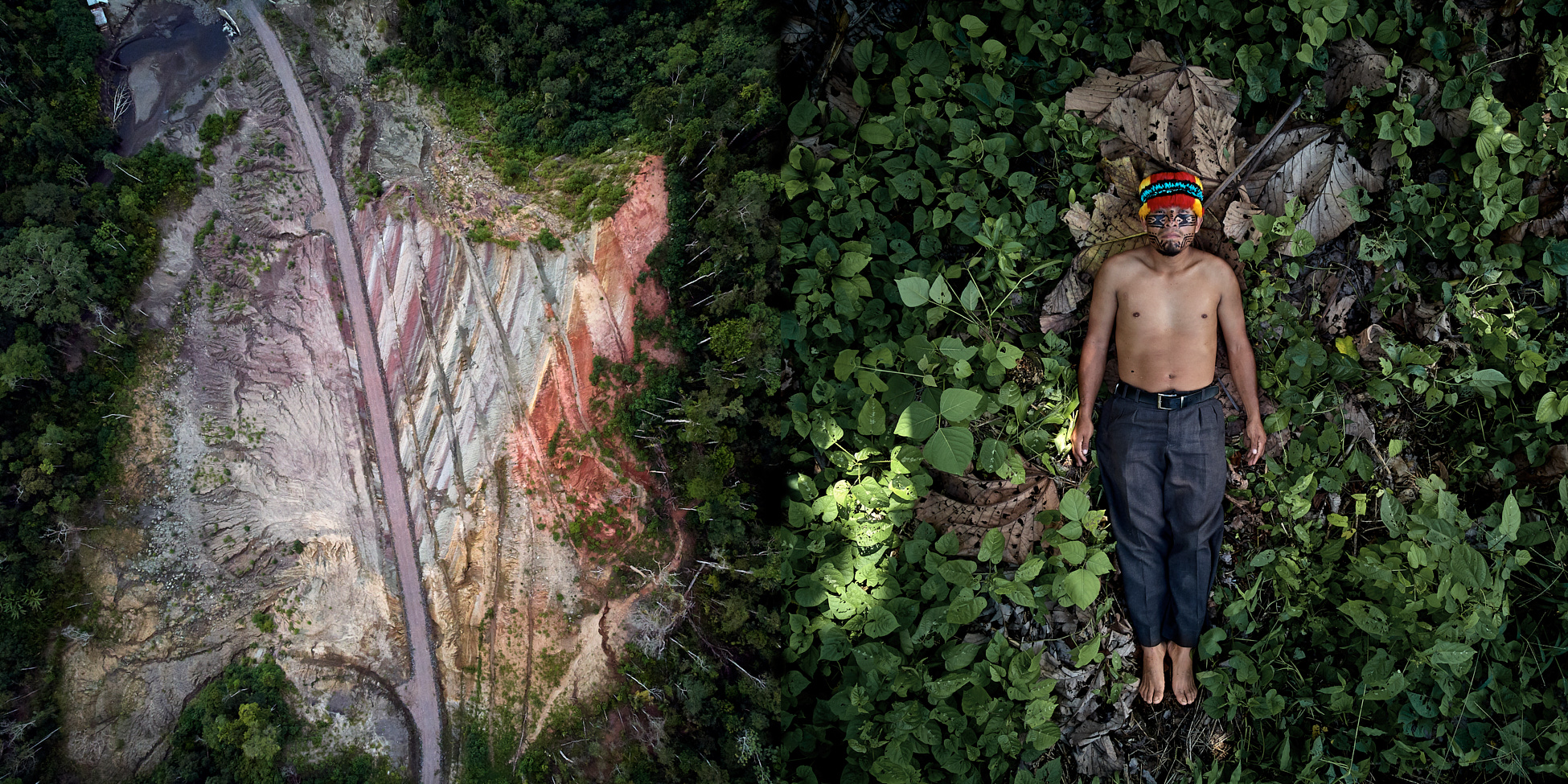
SOR 2
Julián, an Indigenous man from the Achuar Nation in Ecuador, is fighting alongside his community to protect their territory from the impacts of a newly constructed road, as well as other threats such as deforestation, which is already affecting their neighboring Shuar people.
Right: Julián lying on his sacred Indigenous land.
Left: An aerial view of the new road cutting through Achuar territory.
Photo-Composition: Pablo Albarenga
Copataza Achuar Indigenous Community, Pastaza, Ecuador
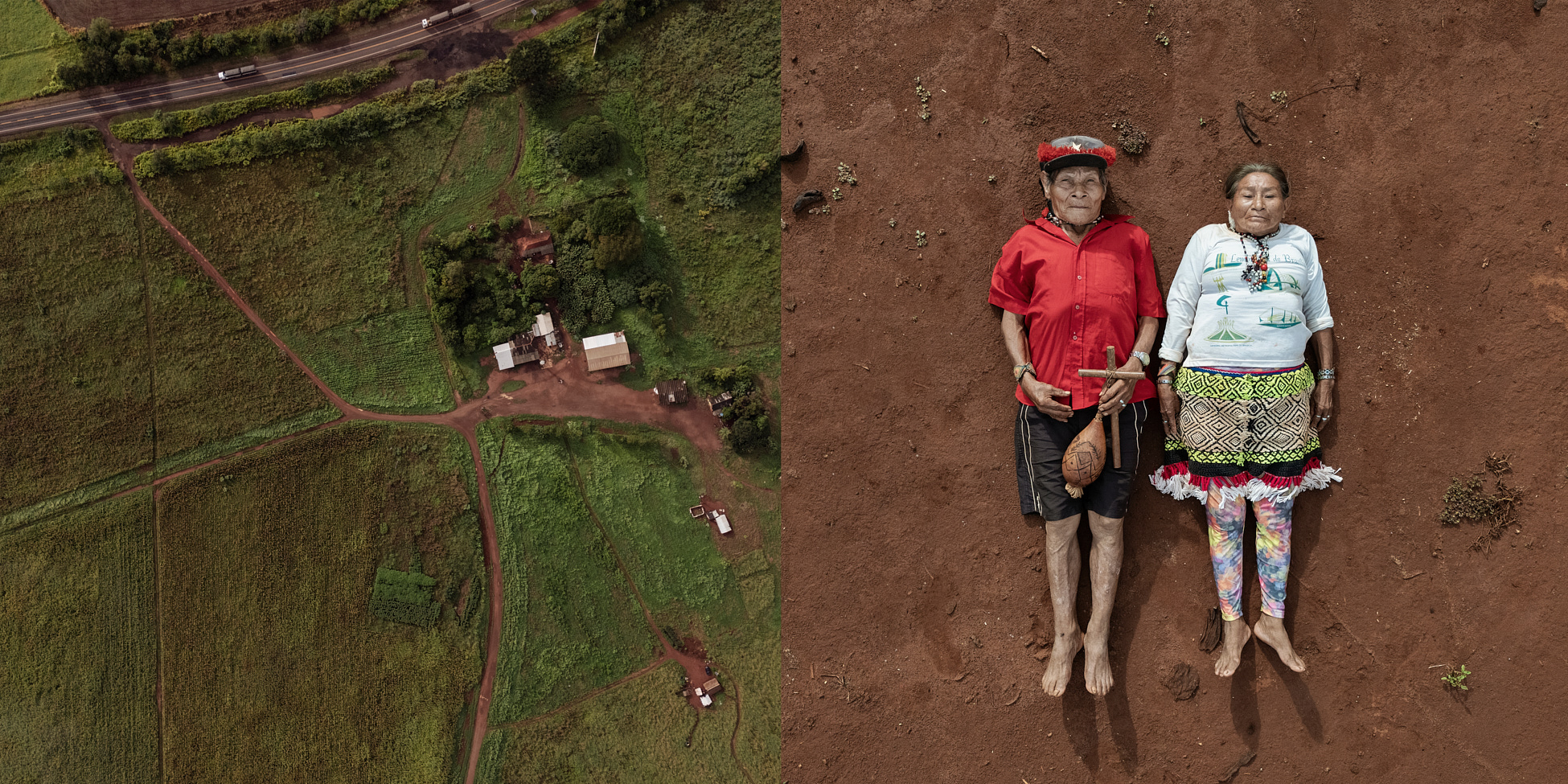
SOR 3
Olimpio and Emiliana are Guaraní Kaiowá shamans. For their people, the Kaiowá prayer is the most powerful weapon. With it, they gather strength to reclaim their ancestral territories, currently occupied by large soybean and corn plantations. In these confrontations, the Kaiowá are attacked by the police and armed militias.
Left: The house of the Portugués, a landowner who attacked the Kaiowá and poured agrochemicals into the community and its waterways. Today, the community is being occupied by the indigenous people themselves.
Right: Olimpio and his partner Emiliana lying on their ancestral land retake, called Laranjeira Nhanderu.
Photo-Composition: Pablo Albarenga
Laranjeira Nhanderu, Rio Brilhante, Mato Grosso do Sul, Brazil, 2024

SOR 4
Paola is an Indigenous woman from the Wayuu people, born in the Wayuu lands now recognized as part of Venezuela. In Wayuu culture, the concept of ‘border’ does not exist; there isn’t even a word for it in their language. Due to the Venezuelan crisis, they were forced to leave their ancestral lands, where her mother’s tomb remains. Paola and 12 other clans were assigned a parcel of land on the Colombian side of the Wayuu territory, while her grandmother chose to stay behind. To visit their ancestral land, where her grandmother still resides, they must cross the border using secondary paths known as *trochas* to avoid migration controls.
Left: Paola lying in her family cemetery, where her mother rests, on a traditional Wayuu *chinchorro*, a handmade hammock crafted by Wayuu women.
Right: An aerial view of Paola’s village in Venezuela, highlighting the paths they traverse to cross the border and reach their lands.
Photo-Composition: Pablo Albarenga
Maicao, border of Colombia and Venezuela
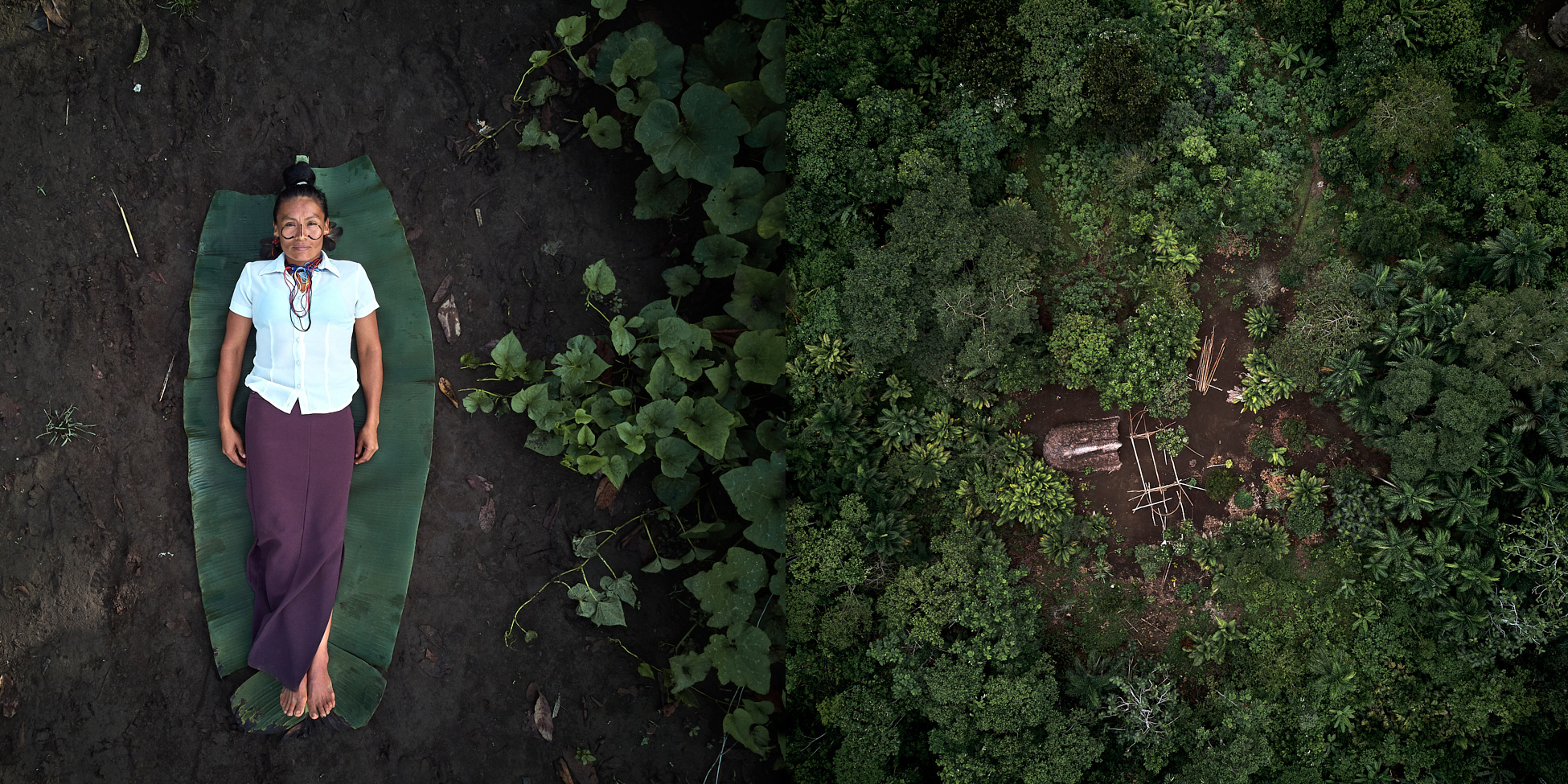
SOR 5
Verónica is an Indigenous woman from the Achuar Nation in Ecuador. For many Achuar women, childbirth is a somewhat taboo subject. When giving birth, mothers often leave their homes and deliver their babies alone in the rainforest. This practice is risky, and some women may lose their lives. Verónica is part of a pregnancy healthcare project that supports women during and after childbirth. She uses modern medical instruments in her work, alongside traditional Achuar medicinal plants to care for mothers and their children.
Left: Verónica lying on her sacred Achuar land.
Right: Verónica’s garden in the rainforest, where many of her ancestral medicinal plants are grown.
Photo-Composition: Pablo Albarenga
Sharamentsa Achuar Indigenous Community, Pastaza, Ecuador
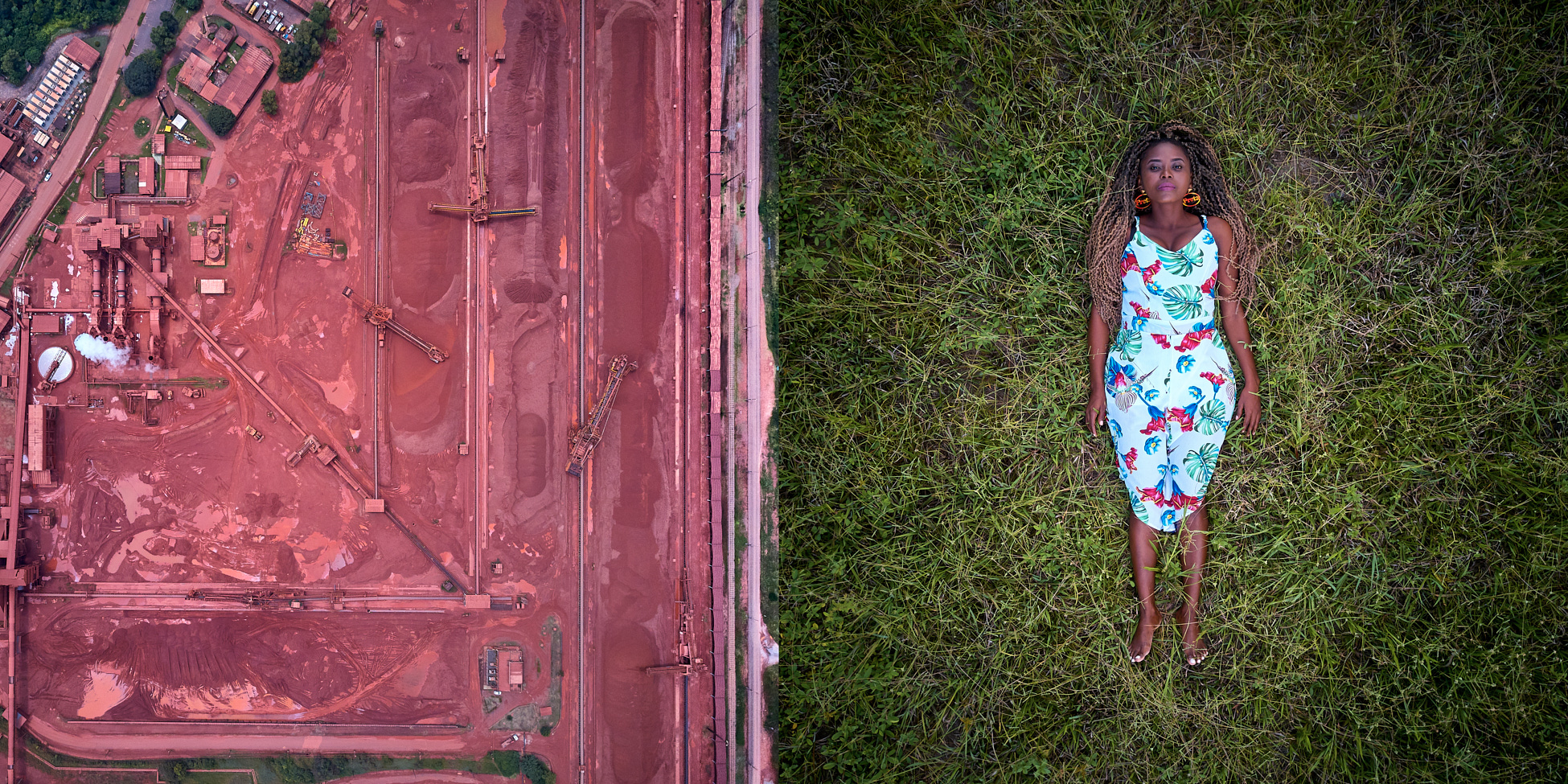
SOR 6
Drica was the first woman elected as the Quilombola Territory Coordinator, representing five communities along the Trombetas River in the Brazilian Amazon. The first challenge these communities face is the pressure from loggers eager to strike deals with them. A second challenge comes from a bauxite mine downstream, which has been constructing dams that threaten the entire Trombetas River. However, for Drica, the greatest challenge is a large hydroelectric dam project that is likely to be approved by the government, endangering the river’s ecosystem and displacing the communities from their ancestral lands.
Right: Drica lying on her ancestral land.
Left: An aerial view of the Rio Norte Bauxite Mine adjacent to Drica’s territory.
Photo-Composition: Pablo Albarenga
Trombetas River, Pará, Brazil
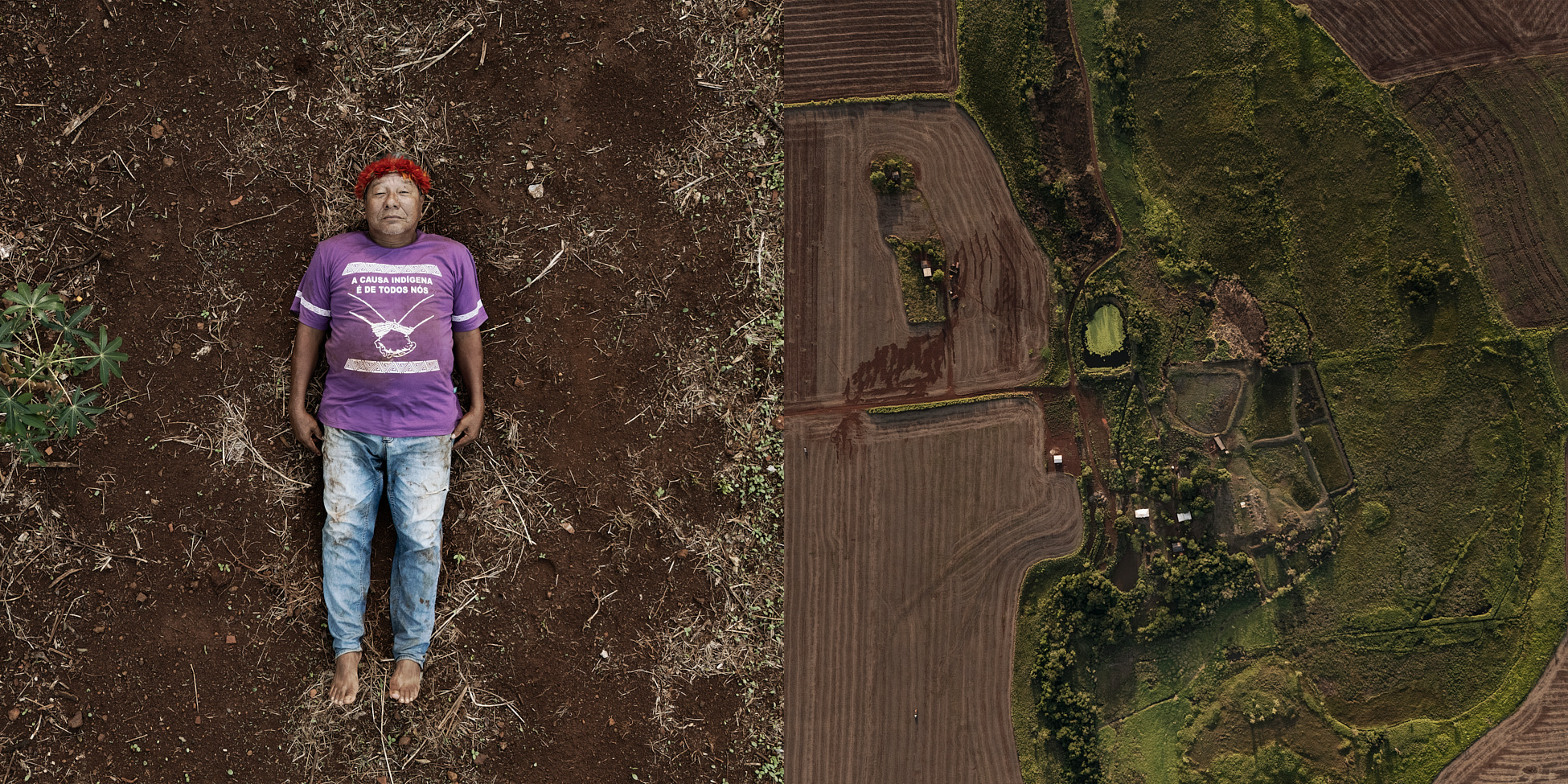
SOR 7
Anastácio Guarani Kaiowá’s parcel of land is surrounded by soybean fields. He is a PhD student at the University of Dourados. Despite much of the demarcated land where he lives being overtaken by soybean cultivation—some families even rent their land to ranchers for this purpose—Anastácio refuses to rent out his own land. Instead, he has created an organic oasis of life. He maintains a small bank of non-modified seeds and plants as much as he can when he’s not studying. Additionally, he works to reforest the area and raises animals like chickens and pigs. In the future, he hopes to teach children how to grow their own food.
Left: Anastácio lying on his land.
Right: The green oasis of life that Anastácio still preserves, surrounded by soybean fields.
Photo-Composition: Pablo Albarenga
Douradina, Mato Grosso do Sul, Brazil, 2024
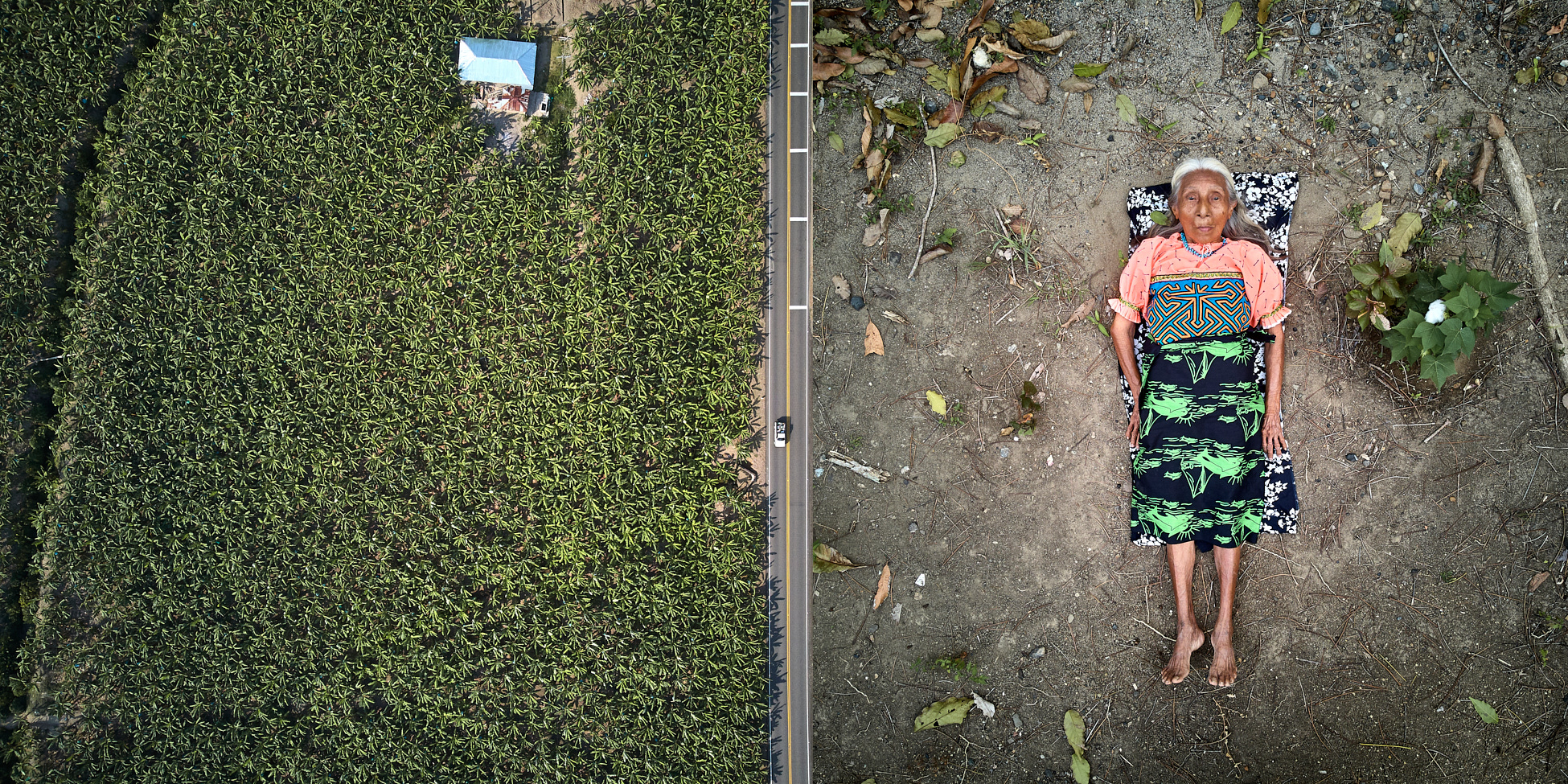
SOR 8
Miguelina is a Gunadule Indigenous elder and grandmother living near the border of Colombia and Panama. Many years ago, the promise of development through banana cultivation transformed their lands into extensive monocultures. The rich and diverse environment in which she was raised has now been reduced to the confines of her front and backyard, where she continues to care for her plants.
Left: The territory of the Gunadule Indigenous people in the lower part of the Ibgigundiwala reservation, New Cayman, is dominated by banana monoculture.
Right: Miguelina lying on her land, which has lost fertility over the years. Adorned in molas, the handmade cloth representing the Gunadule women’s worldview, Miguelina embodies peaceful resistance.
Photo-Composition: Pablo Albarenga
Cayman community, Border of Colombia and Panamá
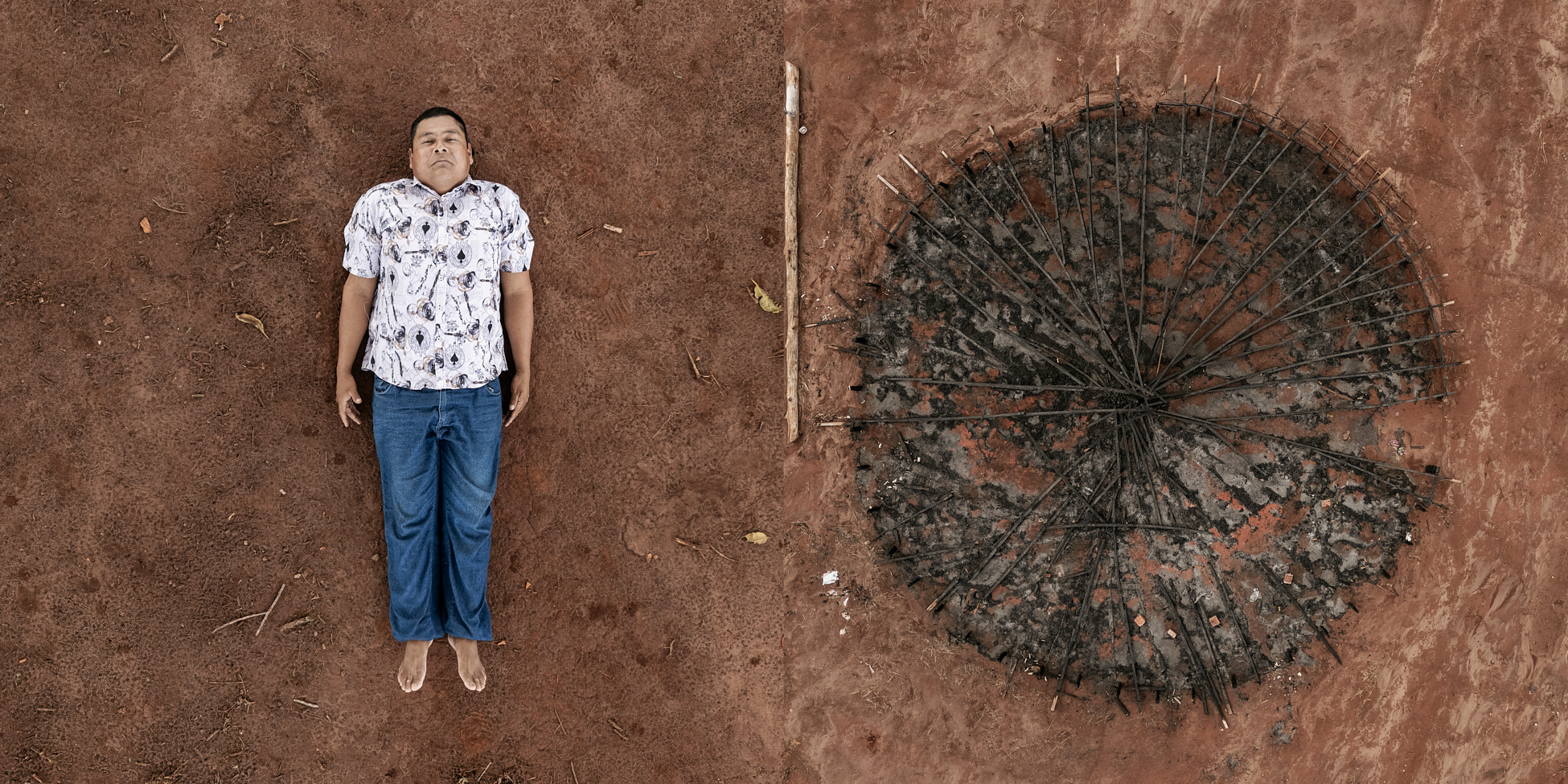
SOR 10
Simão is one of the survivors of the Caarapó massacre, which took place in 2016, during which Clodiodi Aquiles Guaraní Kaiowá was shot and killed by landowners. To this day, Simão carries a bullet he received that day close to his heart. In February 2024, invaders encouraged by a neopentecostal church set fire to his indigenous temple.
Left: Remains of the Guaraní Kaiowá indigenous temple built by Simão and his community, where Clodiodi lost his life.
Right: Simão lying on his territory.
Photo-Composition: Pablo Albarenga
Kunumy Vera Retake, Caarapó, Mato Grosso do Sul, Brazil, 2024

SOR 10
Clodiodi Aquileu Guaraní Kaiowá was shot and killed during the Caarapó massacre, where a group of landowners and hired guns opened fire on the recent indigenous occupation near the Te’yi Kue Indigenous reserve.
Left: Grave of Clodiodi, who was murdered at the age of 26.
Right: Retake of land Kunumi Vera Poty, named in honor of Clodiodi.
Photo-Composition: Pablo Albarenga
Kunumy Vera Retake, Caarapó, Mato Grosso do Sul, Brazil, 2024